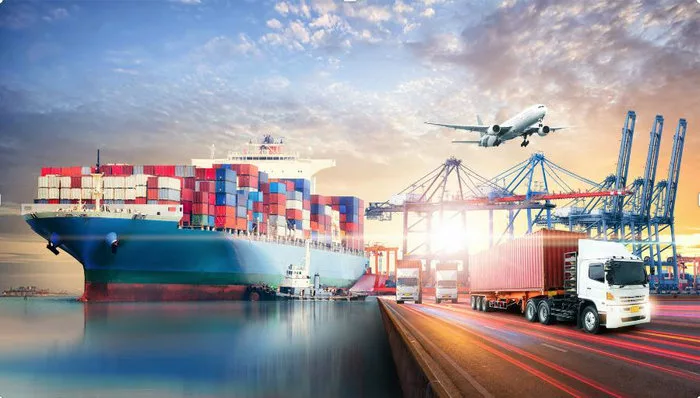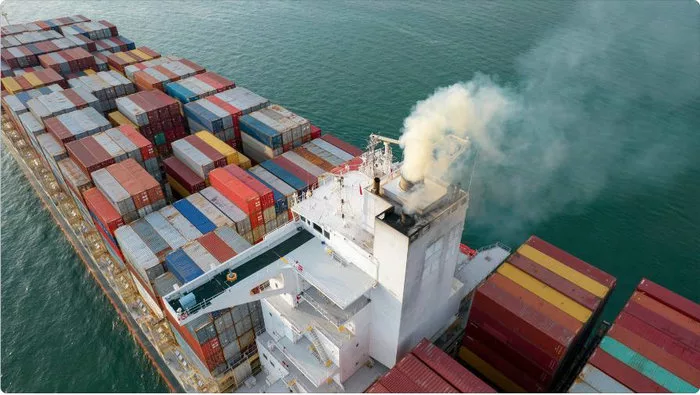
Shipping from China to Denmark is a critical process in the global supply chain, linking the manufacturing capabilities of one of the world’s largest exporters with the sophisticated consumer market of Denmark. You might engage in this transfer for a multitude of reasons, whether you are a business owner sourcing products or an individual purchasing goods. Understanding the procedures, time frames, and costs involved in importing to Denmark from China is essential for a smooth transaction and to ensure that your items arrive on time and within budget.
When considering shipping from China to Denmark, you need to be aware of the different modes of transportation available. Air freight is typically the fastest method but is also the most expensive. Sea freight, on the other hand, is more cost-effective and has a larger capacity for goods, but it comes with longer transit times. Deciding which mode of transportation to use will depend on your specific needs, such as the urgency of the shipment and the budget you have allocated.
Navigating the logistics of international shipping also means being cognizant of the regulatory requirements on both ends. Your shipment must comply with China’s export regulations and Denmark’s import laws, including customs clearance and applicable tariffs or taxes. Moreover, being familiar with trade agreements between the two countries can be advantageous in minimizing duties and streamlining the shipping process. Working with experienced freight forwarders or shipping agents can significantly facilitate this complex process, assisting you with the necessary documentation and helping to avoid common pitfalls.
Key topics covered in this article include:
- Overview of transportation modes from China to Denmark
- Air freight
- Ocean freight
- Rail freight
- Express shipping/courier
- Major shipping routes from China to Denmark
- Comparison of transit time, shipping rates, reliability, and tracking visibility
- Step-by-step explanation of the shipping process and documents required
- DDP Shipping from China to Denmark
- The future outlook for China-Denmark shipping
This guide is essential for China exporters, Denmark importers, logistics companies, carriers, customs brokers, transport operators, and other stakeholders involved in the China-Denmark trade corridor. The information can help optimize supply chain strategies, choose the most economical shipping solutions, improve inventory management, and boost customer service.
Overview of Shipping Options from China to Denmark
There are four main ways to ship goods from China to Denmark, each with its own advantages and disadvantages.
Air Freight

Air freight from China to Denmark is much faster than sea freight and rail freight, with transit times of just 3-5 days. This speed comes at a premium cost, making air shipping expensive compared to other methods. Key advantages of air freight services include:
- Speedy transit time from China to Denmark
- High reliability and shipment tracking visibility
- Ability to transport perishable goods
Disadvantages include the high air freight rates and lower weight/size capacity versus sea and rail.
Ocean Freight
Sea shipping is the most common transport mode on the China-Europe trade lane. It offers a slower transit time of 30-45 days but is the cheapest method of shipping higher-weight/volume containers from China to Denmark. Benefits of ocean freight include:
- Meager shipping costs per container
- High reliability
- Ability to ship bulk and oversized cargo
The downsides are the slower speed to market and lack of tracking during sea transit.
Rail Freight

Rail freight from China to Denmark offers a middle ground in terms of both transit time and costs. Rail cargo from China takes approximately 15-25 days to reach Denmark. Intermodal rail is faster than sea and cheaper than air, with good reliability. But availability is lower than other modes.
Express Shipping
Express shipping is a door-to-door shipping service. International courier services like DHL, FedEx, and UPS offer express delivery of smaller shipments from China to Denmark in 5-8 days. Air express services provide:
- Fast shipping times
- Reliable door-to-door delivery
- Online tracking visibility
But they have very high rates for low-weight packages and small parcels.
Major Routes for China-Denmark Freight Transport
Air Freight Routes
| Origin Airport | Destination Airport |
|---|---|
| Beijing Capital Intl | Copenhagen Airport |
| Shanghai Pudong Intl | Copenhagen Airport |
| Chengdu Shuangliu Intl | Copenhagen Airport |
| Hangzhou Xiaoshan Intl | Billund Airport |
- Beijing Capital International Airport (PEK) to Copenhagen Airport (CPH): There are daily flight departures on this 8.5-hour air route from Beijing to Copenhagen operated by carriers like Air China.
- Shanghai Pudong International Airport (PVG) to Copenhagen Airport (CPH): Pudong is one of the world’s busiest cargo airports. Carriers like Air China Cargo and China Cargo Airlines operate flights between Shanghai and Copenhagen.
- Chengdu Shuangliu International Airport (CTU) to Copenhagen Airport (CPH): Chengdu is China’s 4th busiest cargo airport. It serves as an origin gateway for air freight between western China and Northern Europe.
- Hangzhou Xiaoshan International Airport (HGH) to Billund Airport (BLL) in Denmark: This new route operated by Maersk Air Cargo launched in April 2023 and offers 3 flights per week currently using Boeing 767 freighter aircraft.
Ocean Freight Routes
| Origin Port | Destination Port |
|---|---|
| Shanghai Port | Malmö Port |
| Shenzhen Port | Port of Aarhus |
| Ningbo Zhoushan Port | Malmö Port |
| Qingdao Port | Port of Esbjerg |
| Guangzhou Port | Malmö Port |
- Shanghai Port to Copenhagen Malmö Port: This is one of the most popular shipping routes, taking around 46 days in transit by sea. Major shipping lines like COSCO, Evergreen, and MSC provide regular container services.
- Shenzhen Port to Port of Aarhus: Another major route is from Shenzhen in southern China to the Port of Aarhus in Denmark, which takes around 37-41 days, depending on the carrier. Companies like Maersk, MSC, CMA, and CGM operate on this trade lane.
- Ningbo Zhoushan Port to Copenhagen Malmö Port: Located in eastern China’s Zhejiang province, Ningbo Port is a significant gateway for China-Europe freight. Transit time is around 44 days from Ningbo to Copenhagen by sea.
- Qingdao Port to Port of Esbjerg: Northern China’s Qingdao Port also connects to Denmark’s Port of Esbjerg, taking approximately 40 days for a sea journey. COSCO and other lines offer regular container ship voyages.
- Guangzhou Port to Copenhagen Malmö Port: Shipping Goods from Southern China’s Guangzhou Part to Malmö Port in Denmark takes a transit time of around 46 days for sea freight shipments.
Rail Freight Routes
- There are southern and northern rail routes through Central Asia/Russia and Siberia, respectively.
- For rail freight from China to Copenhagen, Denmark specifically, the transit time is stated to be 18-22 days.
- Cargos from China to Denmark via rail freight typically reach destinations such as Duisburg and Hamburg in Germany. There are no direct routes from China to the Denmark rail hub for now.
Key Details for Each China-Denmark Shipping Method
Choosing the optimal freight transport mode from China to Denmark depends on cost, transit time, cargo type, and shipment size.
Costs
Air freight rates are the highest at $5-7 per kg from China to Denmark. In contrast, ocean freight costs just $100-150 per cubic meter (CBM). Rail freight and courier shipping fall between air and sea on price.
| Mode | Cost |
|---|---|
| Air Freight | $5-7 per kg |
| Ocean Freight | $100-150 per CBM |
| Rail Freight | $2-4 per kg |
| Express Shipping | $6+ per kg |
- Shipping method – Shipping by air is the fastest but most expensive. Ocean freight is the cheapest but slower. Rail and road options fall in between on both time and cost.
- Weight/dimensions – Heavier and bulkier cargo incurs higher shipping rates across all modes due to extra handling and capacity limitations. Dimensional weight pricing may increase costs for large volume but light packages.
- Distance – Longer transport distances mean higher fuel costs and transit times, increasing freight rates.
- Speed/urgency – Faster delivery options like air and road express transport come at a premium cost. Slower sea and rail save money.
- Route accessibility – Remote destinations or those with underdeveloped infrastructure can be more expensive to service.
- Peak seasons – High demand periods around holidays lead to rate surcharges across air and ocean freight.
- Consolidation – Shipping partial container loads (LCL) is typically more expensive than full (FCL) moves. Consolidation helps optimize costs.
- Customs processes – Complex or unpredictable customs clearance regimes increase costs due to delays and administration.
- Insurance/risk – Higher levels of cargo insurance coverage add to total freight charges.
Transit Time
Transit time refers to a shipment’s total duration to travel from origin to destination. It is a key consideration when selecting a freight mode. The table below shows average door-to-door transit times from major ports in China to Denmark across different shipping options:
| Shipping Method | Transit Time |
|---|---|
| Air Freight | 3-5 days |
| Ocean Freight | 30-45 days |
| Rail Freight | 15-25 days |
| Express Shipping | 5-8 days |
Several variables can impact overall freight transit time:
- Origin and destination ports
- Peak season surcharges
- Customs clearance efficiency
- Consolidation requirements
- Final mile transportation
Reliability and Safety
Reliability refers to consistent and on-time delivery, while safety covers preventing cargo damage or loss.
Reliability Rates
The table below shows average on-time shipping reliability rates for various freight modes:
| Mode | Reliability % |
|---|---|
| Air Freight | 95-98% |
| Ocean Freight | 95-98% |
| Rail Freight | 90-95% |
| Express Shipping | 95-98% |
Air, ocean, and express providers boast 95%+ reliability from China to Denmark. Rail freight has slightly more variability.
Cargo Safety
- Air freight offers high safety and security for valuable or sensitive goods.
- Ocean shipping containers provide protection from physical elements.
- Express couriers guarantee delivery by committed timelines.
- Cargo insurance covers loss or damage up to declared value.
Mitigating Transport Risks
Strategies to minimize shipping disruptions include:
- Route diversification
- Booking space ahead of peak seasons
- Using experienced logistics partners
- Following packaging best practices
Reliability levels above 90-95% make air, ocean, rail, and express all viable options from China to Denmark. Safety is also not a significant concern.
Tracking Visibility
The ability to track cargo location and status in real-time provides transparency and peace of mind when shipping internationally.
Tracking Options by Mode
| Mode | Tracking Visibility |
|---|---|
| Air Freight | End-to-end visibility |
| Ocean Freight | Limited visibility during sea transit |
| Rail Freight | Minimal tracking during inland transit |
| Express Shipping | Full door-to-door tracking |
- Air freight enables the highest shipment visibility with location and status updates from the origin to the destination airport.
- Ocean shipping tracking has improved recently but still lacks updates during the sea voyage stage. Only origin load and destination discharge events are visible.
- Rail freight tracking systems provide origin and destination terminal updates but no visibility for inland journeys.
- Express couriers like DHL and FedEx provide detailed multistage tracking from pickup to final delivery.
Enhancing Supply Chain Visibility
- Use IoT sensors and loggers to monitor real-time shipment conditions like temperature, humidity, and shocks.
- Leverage control tower solutions from logistics partners to integrate data across transport modes.
- Digitize trade documents and connect systems via API for end-to-end visibility.
Size and Weight Capacity
The maximum dimensions and weight each freight mode can carry are vital considerations when shipping goods to Denmark from China.
Air Freight
| Factor | Capacity |
|---|---|
| Max Weight | ~300 kg for a single package |
| Max Dimensions | Length 4.5m, Width 3m, Height 3m |
- Best for urgent, lightweight shipments
- Individual boxes are limited to around 300 kg
Ocean Freight

| Factor | Capacity |
|---|---|
| Max Weight | No weight limit |
| Max Dimensions | Length 12m, Width 2.5m, Height 2.5m (for 20′ container) |
- Ocean shipping transports over 20,000 kg of bulk cargo in FCL.
- LCL shipments consolidate less than container load cargo
“FCL” stands for Full Container Load, and “LCL” stands for Less than Container Load. These terms are used in shipping to describe the quantity of shipped cargo.
- FCL shipping is used when a shipper has enough goods to fill a full container. The entire container is reserved for the shipment of one shipper. FCL is commonly chosen when the volume of goods is significant enough to occupy a whole container, and the shipper wants exclusive use of that container.
- LCL shipping is used when a shipper’s cargo does not fill a standard container. In this case, the shipper shares the container with cargo from other shippers. LCL is suitable for smaller shipments that don’t require the use of an entire container.
Both FCL and LCL have their advantages and considerations. FCL offers exclusivity and may be more cost-effective for larger shipments, while LCL allows shippers with smaller loads to share container space, reducing costs for smaller shipments.
Rail Freight
| Factor | Capacity |
|---|---|
| Max Weight | Around 5,000 kg upwards |
| Max Dimensions | Restricted by container dimensions |
- The upper weight limit depends on the rail car type
- Intermodal containers are used for most freight
Air freight works for small, urgent shipments up to around 300 kg. Rail takes cargo from 5,000 kg upwards.
Process of Shipping from China to Denmark
The shipping process from China to Denmark involves several key steps:
Documents Required
When shipping goods from China to Denmark, you must navigate a series of steps involving export procedures in China and import regulations in Denmark effectively to ensure a smooth transition.
For China customs clearance:
- Commercial invoice
- Packing list
- Bill of lading
- Customs declaration
- Certificate of origin
- Inspection certificate (for certain goods)
- Import license (where applicable)
- Other permits and licenses as per product type
For Denmark customs:
- Commercial invoice
- Freight insurance documents
- Packing list
- Customs Import Declaration (Single Administrative Document)
- Certificate of origin
- Simplified Export Certificate (for wine)
- Other certificates like CITES permit if importing restricted items
Customs Clearance
- Export customs clearance is conducted in China before cargo departs
- Import customs clearance happens when cargo enters Denmark
- A customs broker can help manage clearances
- Any duties and taxes are paid during customs clearance
Finding a Freight Forwarder
- A freight forwarder handles shipping logistics
- Essential services include booking cargo transport, documentation, customs clearance, tracking
- Choose a forwarder with strong China and Denmark expertise
Packing and Labeling
- Export packaging must protect goods during international shipping and handling
- Labeling ensures proper cargo identification
- Palletizing products facilitates loading and unloading
Final Mile Delivery
- The shipper handles the final delivery from Denmark arrival port to the consignee
- Or delivery to Amazon FBA Warehouse in Denmark
DDP Shipping from China to Denmark
DDP (Delivered Duty Paid) means the seller/exporter handles all costs and responsibilities to deliver goods from China to the named destination in Denmark. This includes freight transport, customs clearance, duties/taxes payment, and final delivery.
The main advantage for buyers is predictable landed costs and faster customs clearance since the seller handles import formalities. Downsides include a lack of supply chain visibility and loss of import control.
There seem to be weight and dimension restrictions when using express couriers, with a 30kg maximum gross weight per waybill. No weight limits are mentioned for freight shipping.
The recommended shipment type is LCL by default since it allows for consolidating multiple orders. FCL is more suitable for substantial cargo volumes.
The seller can deliver shipments either to Amazon FBA warehouses in Denmark or to business/residential addresses using express couriers like UPS, FedEx, and DHL for final delivery.
Future Outlook for Shipping between China and Denmark
China and Denmark’s shipping and logistics industry will likely see continued growth and development in the coming years.
Technology Advancements
Emerging technologies like blockchain, automation, artificial intelligence, and data analytics are expected to enhance efficiency, lower costs, and improve visibility across the supply chain.
Infrastructure Investments
Investments in port infrastructure and intermodal transport connectivity could strengthen trade flows between China and Denmark.
Process Improvements
Streamlining customs clearance processes, digitizing trade documents, and cross-border e-commerce could facilitate faster cargo movements.
Environmental Sustainability
Greener shipping initiatives, the use of alternative fuels, and carbon emission regulations could impact the China-Europe transport sector.
Working with Luckystar Logisticon on China to Denmark Shipments
Founded in 2022, Luckystar holds a prestigious membership with the Federal Maritime Commission (FMC) and functions as a Non-Vessel Operating Common Carrier (NVOCC). Focused on providing top-notch service at cost-effective rates, the company primarily caters to clients in China, the USA, Canada, and Europe. Backed by a core team with more than two decades of logistics experience, Luckystar brings significant expertise to the industry. From the beginning, the company has been committed to delivering comprehensive global door-to-door transport and logistics solutions, emphasizing dependability, adaptability, and responsiveness.
A freight forwarder manages the end-to-end shipping process on the China to Denmark trade route. Key benefits of working with us include:
Getting Quotes
- Access to preferential air and sea freight rates
- Identify the optimal carrier and transport solution
Route Optimization
- Plan the best shipping route and gateway ports
- Leverage our network of logistics providers in China and Denmark
- Combine multiple shipments into one consolidated cargo
Documentation Assistance
- Ensure all export and import documents are prepared accurately
- Advise on letter of credit terms
Customs Clearance Support
- Handle customs clearance at both the origin and destination
- Pay any import taxes and duties on the importer’s behalf
- Ensure regulatory compliance on restricted goods
We hope this article provides valuable insights into the imports from China to Denmark. Should you have any inquiries, feel free to reach out to us. Our team is dedicated to satisfying all your shipping needs with utmost care and efficiency.
